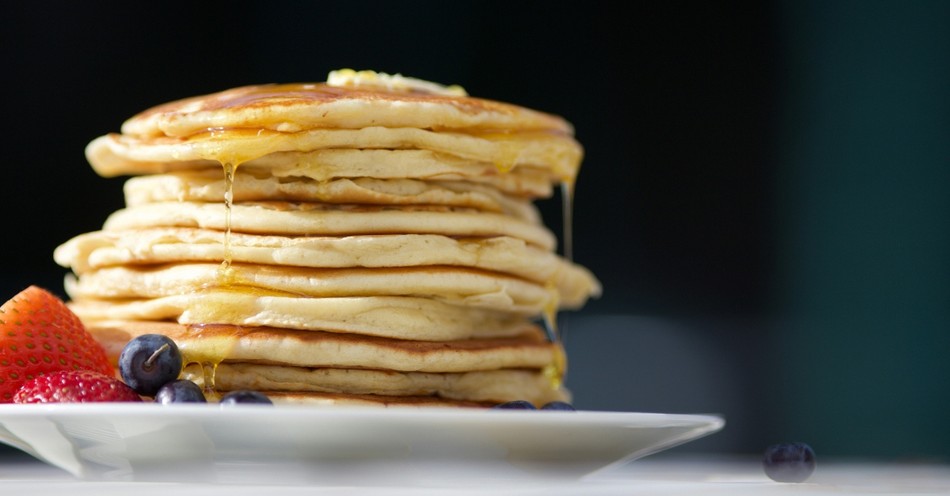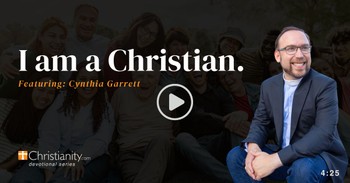Depending on what name you use, Fat Tuesday or Mardi Gras is a famous New Orleans celebration with parades, floats, and throwing beads. People dress in colorful costumes and wear masks while partying in the streets. The King Cake is a dessert with a figure hidden inside, symbolizing good luck and prosperity.
The celebrations developed as a party the day before Ash Wednesday, which begins Lent. Lent begins a 40-day spiritual preparation for Easter. The season focuses on repentance and self-reflection, and it ends during Holy Week. Along with prayer and charitable acts, people who observe Lent often fast from something as a sacrifice, to humble themselves. They might give up meat or sweets or a distraction like social media. Therefore, Fat Tuesday has become this elaborate party to overindulge, to feast and get as much fun in while you can before fasting for 40 days. Unfortunately, much of Mardi Gras is associated with a type of hedonism not consistent with Christianity.
However, Fat Tuesday goes by another traditional name: Shrove Tuesday. As with many parts of Christian history (Christmas, Easter, St. Patrick’s Day), the modern and highly secularized Mardi Gras masks the solemn and spiritual nature of Shrove Tuesday. As believers, we should take the time to understand the true meaning and purpose behind these traditions. Shrove Tuesday is a great example.
What Happens on Shrove Tuesday?
As with Fat Tuesday, Shrove Tuesday is the day before Ash Wednesday which kicks off the season of Lent. The name “Shrove” comes from an old English word shriven, meaning absolved of sins, reflecting the time of confession and repentance during Lent.
Several different Christian groups observe Shrove Tuesday: Catholics, Anglicans, Lutherans, and some Protestant denominations. Most churches use the day to prepare for Lent through reflection, making amends with others, and enjoying a final day of feasting before fasting for Lent.
Eating pancakes has become a famous custom over Shrove Tuesday. The pancake tradition comes from medieval times, where they would consume rich ingredients in the house like eggs, butter, and sugar before fasting for Lent. This also connects with the Old Testament removal of yeast from the house before Passover (Exodus 12:15). In the UK, Ireland, Canada, and Australia, they often call Shrove Tuesday “Pancake Day,” and some churches even host pancake suppers. A few towns in England hold pancake races, where people run while flipping pancakes in frying pans.
Some churches hold special services on Shrove Tuesday, encouraging Christians to reflect and prepare for Lent. Others take the opportunity to engage in generosity like donating food or money. The details may vary, but Shrove Tuesday is meant to be a time of transition and preparation, calling Christians to enjoy the gifts of life while making room for the fast and repentance of Lent.
How Did Shove Tuesday Develop?
Lent developed in the first centuries of the early church. During the latter part of the first century, baptized believers started abandoning their faith because of persecution or other reasons. The church leaders decided more discipleship needed to be done before baptism, which marked a full commitment to God. Since Easter seemed the best time to do mass baptisms, the church would teach new converts for forty days leading up to baptism. The focus on reflection and repentance appealed to the whole church, however, so the congregation would go through those forty days of fasting and repentance together every year. This became what we know as Lent, adopted by the Roman Catholics.
With adopting Lent, Catholics also developed days like Ash Wednesday and Shrove Tuesday. For societies in those days, half or more illiterate, the rituals and traditions helped teach spiritual truths and biblical narratives. Shrove Tuesday began in the early Middle Ages. Within a few centuries, Shrove Tuesday became the practice across Europe. People would seek confession and gather for communal feasts before the fasting season of Lent. Church leaders encouraged believers to eat perishable foods so they wouldn’t go to waste, leading to modern pancake dinners.
Over the years, Shrove Tuesday went beyond the religious, developing more popular or secularized traditions. In France, the day evolved to Mardi Gras or Fat Tuesday, and the French settlers brought the tradition to the Americas and New Orleans specifically. In places like Brazil and Italy, Shrove Tuesday became part of Carnival, another party season before Lent. These festivities have grown into some of the most famous celebrations in the world.
Today, Shrove Tuesday remains an important time for some churches through community gathering and confession. However, it’s become hidden to a degree by the contemporary celebrations.
Why Is Shove Tuesday Important for Lent?
As Shrove Tuesday has developed, we see important lessons and biblical connections. First, the tradition includes a day of feasting before the fasting period, like how the removal of yeast symbolized removing sin.
In Exodus 12:15, God tells Israel, “For seven days you are to eat bread made without yeast. On the first day remove the yeast from your houses, for whoever eats anything with yeast in it from the first day through the seventh must be cut off from Israel.” Yeast makes bread rise, and the Bible uses it to symbolize pride and sin, a puffing up of the heart against God. This command wasn’t only about yeast; it had a deeper meaning, to intentionally purify the life from pride and sin. As Easter and Holy Week happened during Passover, full of symbolism, Shrove Tuesday focuses on the removal of sin through confession before entering the repentance of Lent.
As Lent is about repentance, the Bible shows confession is essential before repentance. People must know what they’re repenting from and to, from sin and pride to humble submission unto God alone. The apostle John declares, “If we confess our sins, he is faithful and just and will forgive our sins and purify us from all unrighteousness” (1 John 1:9). Shrove Tuesday encourages believers to first acknowledge their sins and seek God’s forgiveness.
James 5:16 also talks about the cleansing nature of confession: “Therefore confess your sins to each other and pray for each other so that you may be healed.” Here, the confession happens within the community, to brothers and sisters, who pray for each other and receive spiritual healing. This is a humbling but necessary process. Just like yeast needed to be cleared before Passover, sin must be humbly acknowledged before repentance begins.
Shrove Tuesday also creates a sense of community through shared meals. In the Old Testament, many feast days held spiritual significance, of which Passover was one. Jesus often ate with both his disciples and sinners, and we see this practice through the early church in Acts. During Shrove Tuesday, churches hold pancake suppers or other gatherings to bring people together before Lent. Communal events encourage relationship and mutual love in the local church, needed for support as they go through prayer, fasting, and charity together.
While Lent possesses some sobering and repentant aspects, salvation also includes overwhelming joy. Shrove Tuesday reveals this joy through a time of feasting and celebration during confession. The confession leads to salvation and deliverance, a reason to party. Lent doesn’t only ask us to endure suffering but to see the cross as a path to the joy of Christ’s resurrection.
How Can Christians Today Participate in Shove Tuesday?
All Christians can observe some form of Shrove Tuesday without resorting to the hedonism of certain cultural celebrations.
Those from liturgical backgrounds (like Catholics, Anglicans, and Lutherans) should emphasize the historical roots of the day. They can attend a communal confession service or set aside personal time for self-examination. Families can get together and read Bible verses about confession and repentance, like Psalm 51, and discuss how God is leading them to fast for Lent and where to serve others in the community.
If churches have pancake suppers, they can expand this and open it to the larger local community. Invite others to the party. Instead of simply eating together, a church can bring a short devotional or have worship music to help teach people about the true meaning of the day. A fellowship could also have a “burning of the palms” ceremony, where leftover palm branches from the previous Palm Sunday are burned for the next day, Ash Wednesday. These practices connect Shrove Tuesday to the broader liturgical calendar.
Some believers or families could choose to spend the day or evening serving those in need. Almsgiving, or charitable giving, is a big part of Lent, so a church or group of Christians can give food to the homeless or collect food for a local pantry.
Evangelicals and those in non-liturgical denominations can still observe Shrove Tuesday in creative ways to focus on spiritual disciplines, the history of the Lenten season, and bringing together the community. Families can host a “fasting preparation night,” where they discuss what to give up for Lent and why. Parents or churches can teach kids about the biblical reason and discipline of fasting through different lessons and interactive activities. Fasting may go against a modern consumeristic culture, but it remains a valid and crucial spiritual discipline.
Churches or small groups can have a “feast and fast” event. The group would enjoy a meal together (perhaps inviting the larger community, as well) but then spend time in prayer and worship before discussing the discipline of fasting and what God might be leading them to give up during Lent. Or the group can decide what local charities they should support. Many churches already have pancake breakfasts for community events, even apart from Shrove Tuesday, so those events would be easy to organize before Lent. On social media, people can encourage others to do acts of charity and share the experience of fasting and Ash Wednesday with a larger audience.
No matter what we do, traditional or creative, Shrove Tuesday can be a powerful opportunity for Christians to confess and celebrate their faith before entering Lent.
Peace.
Photo credit: Unsplash/Luke Pennystan




